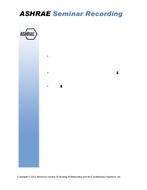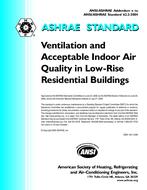Click here to purchase
An increasing marketing campaign by the green building industry and particularly the Leadership in Energy and Environmental Design (LEED™) certification system promotes linkages between LEED certified, high-performance buildings, and better indoor environmental quality (IEQ). Despite the favorability of this hypothesis, few studies have empirically proven the linkages between LEED building’s envelope design and their impact on occupant’s thermal comfort perceptions. This paper reports on an investigation of the relationship between better building envelope design and thermal comfort performance with respect to occupant’s perceptions. By employing a longitudinal study approach, the investigation focused on a pre/post-occupancy move of 800 office employees from a traditional (Valley Forge, PA) to a LEED (Malvern, PA) platinum certified building. The specific question posed is whether moving from a traditional to a LEED certified green building has positive impacts on occupant perceptions of indoor thermal comfort? And if proven, what attributes of the LEED building have a positive effect on both physical and psychological perception of better thermal comfort and IEQ? Continuous and intermittent measurements were performed and pre-/post-occupancy evaluation surveys were conducted. Results show strong correlations between improved visual, acoustical, and indoor air qualities of the retrofitted green environment that is well correlated with improved employee’s productivity and satisfaction. Perceptions of the thermal environment, however, varied between those positive and negative responses leading to little or no improvement. Detailed commissioning and measurements using a triangulation of research procedures were further employed to understand thermal shortcomings of the Heating Ventilation and Air Conditioning (HVAC) system and additional retrofits, as well as occupant’s behavior, are recommended. Proving that, for high-performance buildings, both the occupants and the buildings require on-going dialogue to ensure the occupants are able to adjust to the building systems and achieve its desired levels of performance.
Citation: Thermal Buildings XIV 2019
Product Details
- Published:
- 2019
- Number of Pages:
- 8
- Units of Measure:
- Dual
- File Size:
- 1 file , 1.6 MB
- Product Code(s):
- D-Bldgs19-012


